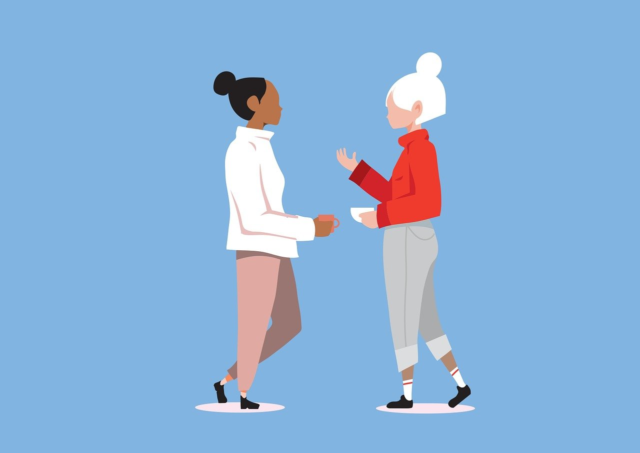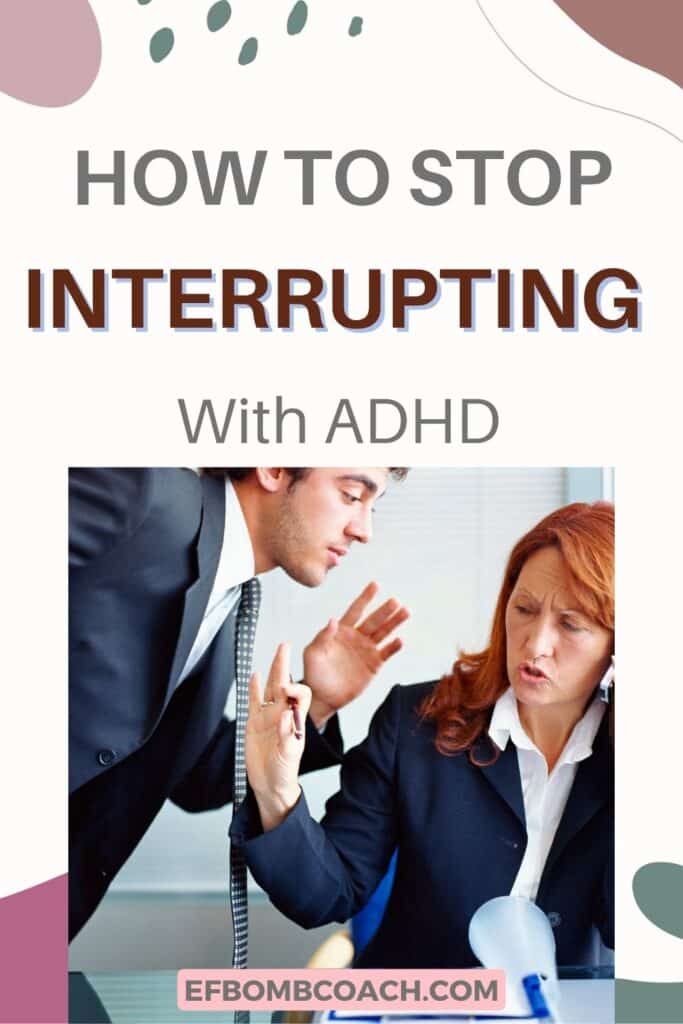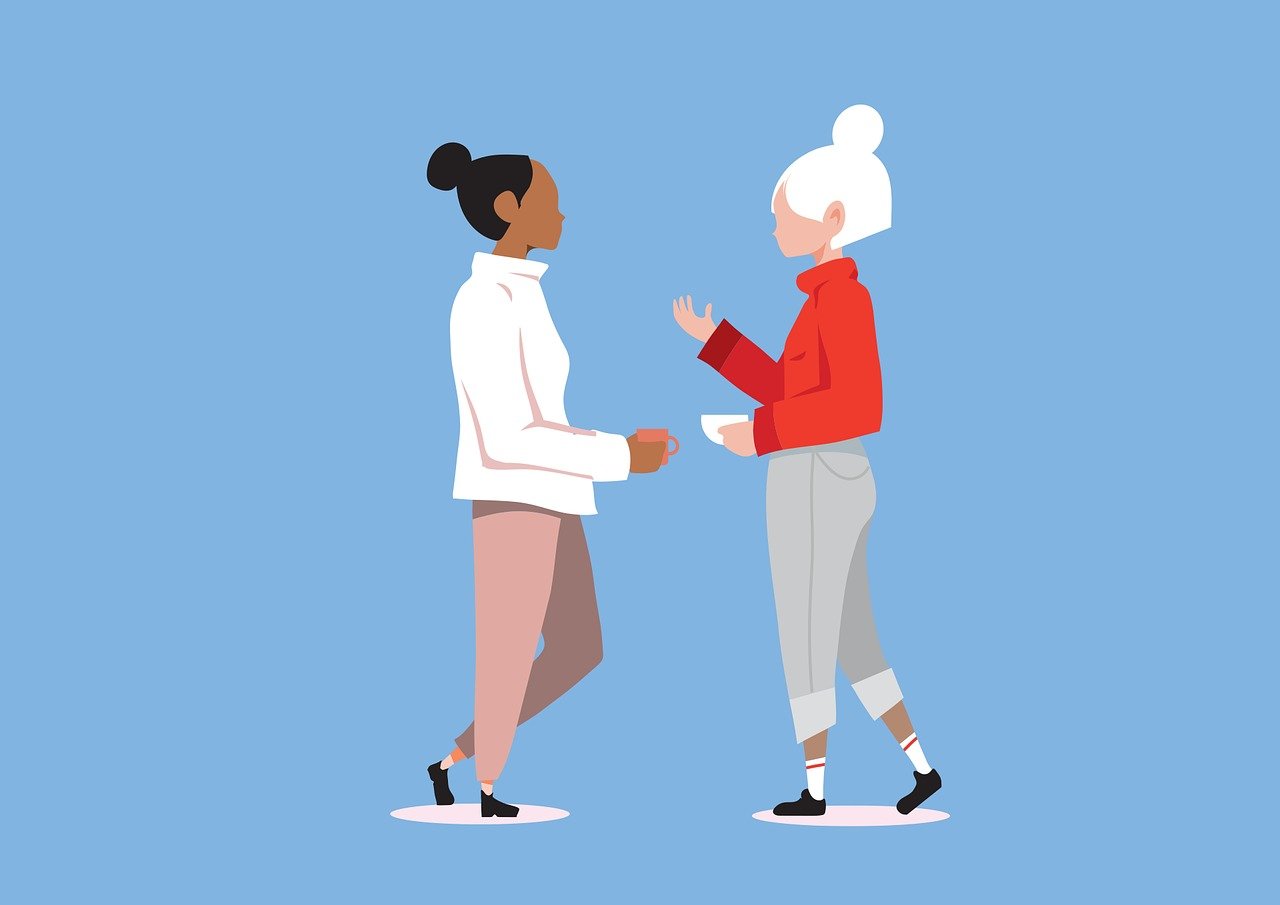How to Stop Interrupting with ADHD
Interrupting people can feel automatic when you have ADHD. Sometimes your thoughts race so fast you can’t stop them from spilling out. You mean well, but impulsive speech and struggles with self-control can make it tough to wait your turn. It’s frustrating when the words just come out, especially when you’re trying to show you care or stay in the conversation.
Prefer to listen rather than read? Press play below.
ADHD often makes self-regulation harder, which means it takes real effort to pause and think before speaking. This habit can strain friendships, cause hurt feelings, and leave you feeling misunderstood. The good news is there are ways to slow things down and bring more intention to your conversations.

Why People with ADHD Interrupt Others
Interrupting can happen so quickly you barely notice it’s happening, especially if you have ADHD. You might jump in because your mind races ahead, or you’re worried you’ll forget what you want to say.
Sometimes, you’re just excited—or maybe you don’t even realize you cut someone off until it’s over. It can feel frustrating, even embarrassing, when you realize it’s happened again. But this isn’t just about “bad manners.” There are real, brain-based reasons behind why you or someone you love with ADHD interrupts others.
The Impact of Impulsivity and Hyperactivity
ADHD isn’t just about losing focus. For many, it comes with a strong urge to act right now, even if later you wish you hadn’t. Impulsivity pushes you to speak before you pause. Hyperactivity can feel like words bubbling up inside you, needing to come out.
Hyperactive thoughts can feel like you’re trying to hold a lid on a pot of boiling water—eventually, something spills over. There’s a deep urge to keep a conversation moving, to avoid feeling left out or forgotten. And it often feels urgent, even if it isn’t.
If any of this rings true, you’re far from alone. The science backs you up: impulsivity and hyperactivity are core features of ADHD that directly make waiting and listening feel extra hard.
Working Memory and Thought Overflow
Have you ever have so many ideas racing through your head, you’re desperate to say them before they’re gone? That’s your working memory, and with ADHD, it’s often working on overdrive.
Here’s what can happen:
- You have an idea, worry you’ll forget it, so you speak up right away
- It’s tough to juggle what’s being said and what you want to say next
- You may lose the thread of the conversation if you try to wait
Your brain is trying to hold on to a dozen thoughts at once, and it can feel like your mouth is the only way to get some relief. If you don’t get your thought out, you’re afraid it’ll just vanish.
When your mind is overflowing, it’s easy to blurt things out, not because you don’t care, but because you’re trying to stay present.
Societal Expectations for Women and Communication
If you’re a woman, you’re probably used to hearing that you should listen more, speak less, and be extra polite. Society places heavy rules on how women “should” communicate. With ADHD, those rules can feel impossible.
Many women with ADHD feel pressure to:
- Be the good listener, even in group settings
- Stay quiet or not “take up too much space”
- Avoid interrupting, even when brimming with ideas
When you do interrupt, the reactions often feel harsher. Instead of a shrug, you might get called “bossy” or “rude.” The stigma grows. Self-criticism kicks in. You might even start to withdraw from conversations just to avoid the shame spiral.
These expectations can amplify guilt and make it harder to speak up again, trapping you in a cycle of silence and second-guessing. This is not just in your head—cultural norms around women’s roles shape how we judge ourselves and others.
The struggle is real. ADHD adds invisible hurdles in communication, and when those collide with outdated stereotypes about women’s behavior, it’s no wonder it feels overwhelming.
The more you understand what’s really going on, the more compassion you can give yourself—and that’s the first step in breaking these patterns.

Want to learn more about executive functioning? Take my FREE course.
Recognizing Your Patterns and Triggers
If you want to stop interrupting people with ADHD, the first step is noticing when and why you do it. Sometimes you interrupt because your mind is racing, or maybe you’re caught up in the moment and just can’t help it.
But if you don’t know what sets you off, it’s tough to slow down. Think of this section as a spotlight, showing you how to notice your triggers, reflect on what’s happening, and use tools to keep track of it all.
Building this self-awareness isn’t about blame. It’s a skill you can practice, and it makes everything else easier.
Techniques for Self-Awareness and Reflection
Getting a handle on self-awareness when you have ADHD can feel impossible. But you can do it, one small observation at a time.
Start by tuning into what’s happening right as you notice the urge to interrupt. What are you feeling? Where are you? Who are you with? Sometimes, you’ll spot a pattern that surprises you.
Practical techniques include:
- Pause and Check In: When you feel that urge rising, practice pausing. Even two seconds can be enough to ask yourself, “Do I need to speak now, or can this wait?”
- Notice Physical Signs: Maybe your heart races, or your hands start to move. Noticing these body signals helps you catch yourself earlier.
- Mindful Listening: Try focusing your attention on the speaker’s words and body language, rather than your own response.
These techniques work best when you keep trying even if you slip up. Self-awareness takes practice, especially if your brain wants to bolt ahead.
Identifying High-Risk Scenarios
Sometimes, certain situations make it almost impossible to stay quiet. Maybe you’re in a heated debate. Maybe you’re excited with friends. Or your boss is rattling off instructions, and you don’t want to forget your great idea. Recognizing these “high-risk” moments is half the battle.
Common high-risk scenarios often include:
- Group discussions where lots of thoughts fly around
- Fast-paced meetings or brainstorming sessions
- Times when you’re emotional, like happy or frustrated
- Situations where you’re tired, hungry, or stressed
It helps to list out your own high-risk moments. Ask yourself: When do I notice myself interrupting most? By mapping it out, you’ll start to spot patterns.
Research shows that people with ADHD are more likely to act impulsively in certain situations, so being ready matters.
Journaling and ADHD-Friendly Tracking Tools
Journaling can help you track your interruptions and give you a window into your habits, while ADHD-friendly tools make it easier to stick with it.
Here are some options that help you capture your patterns:
- Simple Journals: Just jot down the situation, what you felt, and what you did. Keep it short and sweet.
- ADHD Planners: Specially designed planners use prompts and checklists to help you stay organized and aware (ADHD Planners & Tools For Organization & Productivity).
- Digital Trackers: Try to-do list apps made for ADHD brains. Many offer features like reminders, simple layouts, and ways to break big tasks into small steps. Some favorites include Amazing Marvin, TickTick, and Sunsama.
The best tracking tool is the one you actually use. Try things out until you find something that feels natural. Even one note per day can help shine a light on your patterns. Those small data points add up and make it much easier to prepare for your trickiest moments.
Recognizing your patterns and triggers might feel strange at first, but it’s a habit that will help you interrupt less and connect with others more.

Practical Strategies to Reduce Interruptions
Building better listening habits with ADHD doesn’t happen by accident. You need real strategies to pause your thoughts, support your brain, and remind yourself to hold back—even when your mind is in overdrive.
Interrupting may feel automatic, but with a few tactical shifts, you can rewrite those patterns.
Mindful Listening and Pausing Techniques
Pausing takes practice, especially when your thoughts zoom around. But mindful listening is a superpower for people with ADHD. It helps you stay tuned to the person talking, not just the urge to speak.
Try these ideas:
- Count to three before speaking. Quietly count in your head after someone finishes. This helps your mind catch up to your impulse to jump in.
- Repeat back what you’ve heard. Paraphrase the last thing the other person said, either out loud or silently. For example: “So you’re saying you felt left out at work.” This makes you focus on listening rather than on your next point.
- Stay grounded with physical cues. Place your hands in your lap, touch your fingers together, or hold an object. These small actions remind you to wait before bursting in.
- Notice the pause. Focus on the silence between turns instead of racing to fill it. That space is your friend.
Practicing these mindful pauses may feel strange at first. Stick with it. You’ll start to notice conversations feel less frantic and more connected.
Using Visual and Physical Reminders
Your brain likes to get distracted or rush ahead, but visual and physical reminders can act like guardrails. These cues help your mind remember to slow down, even in a lively chat. The trick is to keep them simple and visible.
A few ideas to use right now:
- Sticky notes with reminders. Place a bright sticky note with words like “WAIT” or “BREATHE” on your notebook, computer, or even your phone.
- Wearable cues. Wear a bracelet or rubber band. Every time you notice it, it’s a nudge to pause before speaking.
- Conversation objects. Hold a smooth rock or fidget toy when chatting. This subtle trick can ground your energy and slow your responses.
- Visual boards. A small sign or graphic on your desk can signal “listen first” during calls or meetings.
Visual cues can change the feel of your day-to-day life with ADHD. These aren’t childish—they work with your brain.

Did you know I have a membership for women who want to improve their executive function skills? Check it out here.
Change doesn’t happen all at once, especially when ADHD is in the mix. You’re working against habits that run deep, so give yourself extra credit for every time you notice, pause, or ask for support. Setbacks aren’t proof you can’t change—they’re just a signal that you’re still practicing.
ADHD brings unique challenges, but you’re not broken or bad at conversation. You’re building new skills, and that takes patience and self-compassion. If you’re ready to keep growing, try one strategy and see how it feels.
Each moment you catch yourself before interrupting, or show yourself a bit of kindness when you don’t, counts as progress. Keep celebrating these small wins, even if no one else sees them. You deserve to feel proud of trying.








